Create a green roof
• Create a scenery with pots
• Growing plants in unusual containers
• Make your potted plants more beautiful
• Choose the material of pots
• Look after your pots to make them last
• The right pot for the right plant
• Upright-growing plants in pot
• Growing a tree in a pot
• Hiding a cumbersome stump
• Hiding the compost heap
• Optimize Trees
• How to redesign a flowerbed ?
• Create a flowering border like a painter
• Harmonise foliage between them
• Succeed with your borders
• An attractive garden in winter
• Create a Mediterranean corner
• Create an exotic area
• Create a Japanese corner
• Create a green roof
• Create a rockery
• An Acer, for all gardens
Replacing tiles by a touch of greenery is not so complicated. However, it is best to do it on a garden shed as there are a few constraints to respect.
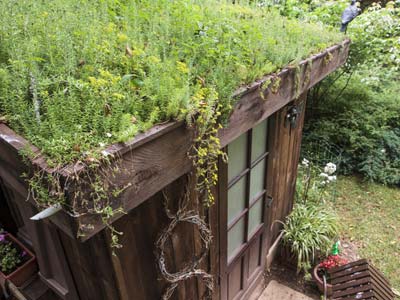
A shed with a green roof, a unique charm!
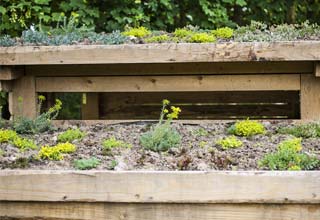
Practice on a shed and not on a house!
A green roof presents several advantages as it regulates the building’s temperature on which it is growing. It is true in summer like in winter. This roof does not prevent rainwater’s collection, as the green roof only retains a fine layer of water (up to 10mm per m2). In case of light rain, the roof gets watered but if there is a storm it lets part of the water flow.
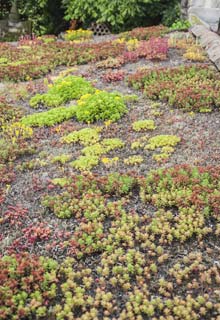
A complete green cover takes years.
A simple principle
The technic rests on a simple system made of a layer of covering plants like cold- resistant succulents which grow on a light draining matter such as pouzzolane or expanded schist. Turf on the roof, which is often found in Northern Europe is not suitable as it needs to be cut now and again and it has a tendency to dry out completely in summer, during drought episodes which have become more regular lately. To create a green roof there is an imperative condition: the building’s framework must be able to support the roof’s load at maturity, after strong rain that is to say 30 to 50kg per m2. This requires reinforcing the structure of garden sheds which are not designed for this use to start with!
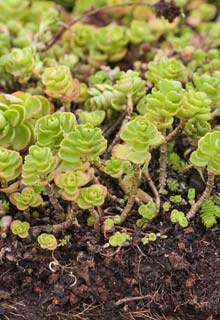
Under the green layer, a thick layer of pouzzolane used as substrate, gets richer little by little.
Several layers
In the detail, a waterproof layer must be covering the entire roof. The best solution consists in placing a pond’s liner, which needs to be spread and glued to the roof’s structure. You must plan for rims in order to retain the substrate (expanded schist) which will sit on the top. It is easier to put a green cover on a garden shed witch has a weak slope (less than 15°) as otherwise you must add some horizontal crosspieces on the liner as they will retain the substrate and avoid its tumbling down. The liner mustn’t be pierced as it would lead to water leaking. On the substrate side, plan for a 5cm layer of something light. You must not add soil, sand or gravel as it would be too heavy. You can help nature in spreading a little bit of compost. Bonsai’s potting compost is well suited in this case and you can spread 2kg per m2 (one bag).
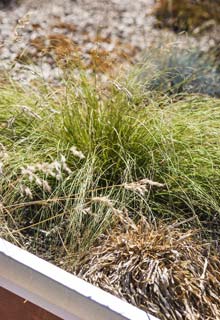
When the substrate has enriched and if the layer of draining matter is quite thick, you can plant varied grass plants.
Planting
It consists in wedging the perennial plants in the substrate, having removed a good part of the earth ball. It is better for the weather to be on the humid side for the plants to have time to take roots and grow. The settling in is anyway rather slow and they need two years to cover up the entire roof. (Use 10 plants per m²). It is useful to water a little bit during summer’s droughts. At the beginning of the growing season, supply a slow release fertiliser, like for lawns. Once the greenery has established on the slopes, there will be nothing left to do. You can however envisage placing other plants like Convolvulus Cneorum, Iris, Thyme, Stipas, Thymus Serpillum...
































